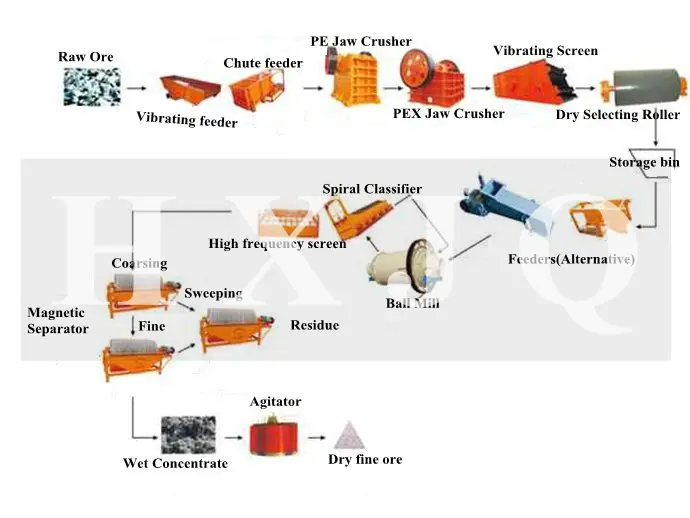
Image source: https://sc01.alicdn.com/kf/HT1EhdpFLdXXXagOFbXk/201272347/HT1EhdpFLdXXXagOFbXk.jpg
Two important characteristics of tantalum must be kept in mind before performing fabrication process:
All bending, forming, stamping or deep drawing operations are usually done at low temperature. Heavy sections can be heated by forging to about 800 F.
Annealed tantalum, lead, copper, stainless steel are sticky, having a strong tendency to gall, tear and seize.
Form Stamping of Tantalum:
In this method, sheet metal work in tantalum is done with metal of thicknesses ranging from 0.004 inches to 0.060 inches. Steel dyes are used for smooth punching and blanking processes. The clearance between the steel dye and punch must be close to 6% of the metal thickness. Close observance to the clearance is essential, therefore, use of perchloroethylene or light oil is recommended to stop scoring of the dyes.
Safety measures should be taken to prevent tearing or seizing of Tantalum. Form stamping methods of tantalum are similar to those used for mild steel. The dyes are usually made up of steel except where there is substantial slipping of the metal, in that case, beryllium copper or bronze dyes should be used.
The annealed tantalum sheet is usually used for deep drawing process. It is defined as a process in which the depth of draw on the finished part is equal to the diameter of the blank. Tantalum does not harden as quickly as most other metals, and its hardening appears at the top rather than the deepest part of the draw.
To perform more than one drawing operation, the first draw should have a depth of 50 percent of the diameter. Steel punch, chlorinated oil, Sulphonated tallow, and castor oil are used if there is not too much slippage encountered. Finished products from Machining Tantalum can be easily achieved by heating the metal to temperature above 2,000 oF. The spinning of the metal is done by usual techniques, using steel roller wheels, though yellow brass may also be used for short runs.
Cleaning Technique:
During Cleaning and degreasing of tantalum, no serious problems occur. However, conventional materials and methods must be used instead of hot caustics. Electronic tube parts used in this process should be chemically cleaned. Tantalum parts blasted with steel grit should be immersed in hot hydrochloric acid to remove the iron particles. The parts should be then carefully rinsed with distilled water. Avoid using tap water as it contains calcium salts which may be converted to insoluble sulphates in the cleaning processes.
The parts are chemically cleaned by using the hot chromic acid solution used for cleaning glass. The cleaning solution is used at 110C , and kept warm at all times. When the liquid becomes muddy, it should be discarded. After the chromic acid wash, these parts are thoroughly rinsed, preferably with hot distilled water.
Grit Blasting Technique:
Tantalum parts are blasted with steel grit to give better radiation surface. The most suitable results can be achieved by blasting the metal for a few seconds with a steel grit at a pressure of 40 psi. Careful cleaning should be done using hot hydrochloric acid. In this technique, Alumina, silicon carbide, sand or other abrasives should not be used. As they get stuck on the surface of the metal and cannot be removed with any chemical treatment,this can even damage and scratch the tantalum surface.
The main purpose of grit blasting is to increase the amount of surface per unit area. It should be done in such a way to produce excellent whiskers rather than simple indentations. For best results, the blasting nozzle should be held at an angle almost tangential to the surface, rather than perpendicular.
Machining Technique:
During lathe operations, cemented carbide tools with high cutting speeds are most appropriate. Tools should be sharp with as much positive scrape as they can bear. The angles and rakes used for mild copper can give satisfactory results with tantalum also.
Speed of 100 surface feet per minute is appropriate for most turning operations. A slower speed causes the metal to tear, particularly if annealed metal is being cut. Trichloroethane or Perchloroethylene can be used as a cutting medium for tantalum. During the filing process, the file or cloth must be kept well wetted with one of these compounds.
Welding Technique:
Tantalum welding can be done by resistance welding and inert gas arc welding. Resistance welding can be done with common welding equipments, and methods are not different from those used in welding other materials. Because of the high melting point of tantalum, its resistivity is only two-third to other metals. Tantalum mainly requires a high power input to achieve a perfect weld.
By inert gas arc method, ductile and strong welds can be produced. During this process, precautions must be taken to cover all the surfaces with an inert gas. The temperatures are raised above 600 F by the welding heat.